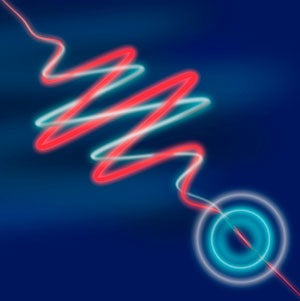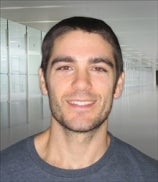
Quantum physics breakthrough: Scientists solve 100-year-old puzzle
Two fundamental concepts of the quantum world are actually just different manifestations of the same thing, says Waterloo researcher

Two fundamental concepts of the quantum world are actually just different manifestations of the same thing, says Waterloo researcher
By Jenny Hogan Centre for Quantum Technologies A Waterloo researcher is part of an international team that has proven that two peculiar features of the quantum world - long thought to be distinct - are actually different manifestations of the same thing.
A Waterloo researcher is part of an international team that has proven that two peculiar features of the quantum world - long thought to be distinct - are actually different manifestations of the same thing.
The breakthrough findings are published today in Nature Communications. The two distinct ideas in question have been fundamental concepts in quantum physics since the early 1900s. They are what is known as the wave-particle duality and the uncertainty principle.
“We were guided by a gut feeling, and only a gut feeling, that there should be a connection,” says Patrick Coles, now a postdoctoral fellow at the Institute for Quantum Computing and the Department of Physics and Astronomy at the University of Waterloo.
Coles was part of the research team at the National University of Singapore that made the discovery that wave-particle duality is simply the quantum uncertainty principle in disguise.
 “It was like we had discovered the 'Rosetta Stone' that connected two different languages,” says Coles. “The literature on wave-particle duality was like hieroglyphics that we could translate into our native tongue. We had several eureka moments when we finally understood what people had done.”
“It was like we had discovered the 'Rosetta Stone' that connected two different languages,” says Coles. “The literature on wave-particle duality was like hieroglyphics that we could translate into our native tongue. We had several eureka moments when we finally understood what people had done.”
The research team at Singapore’s Centre for Quantum Technologies, included Jedrzej Kaniewski and Stephanie Wehner, now both researchers at the Netherlands’ Delft University of Technology.
"The connection between uncertainty and wave-particle duality comes out very naturally when you consider them as questions about what information you can gain about a system. Our result highlights the power of thinking about physics from the perspective of information," says Wehner.
The wave-particle duality is perhaps most simply seen in a double slit experiment, where single particles, electrons, say, are fired one by one at a screen containing two narrow slits. The particles pile up behind the slits not in two heaps as classical objects would, but in a stripy pattern like you’d expect for waves interfering. At least this is what happens until you sneak a look at which slit a particle goes through - do that and the interference pattern vanishes.
The discovery deepens our understanding of quantum physics and could prompt ideas for new applications of wave-particle duality.
Coles, Kaniewski and Wehner are experts in a form of mathematical equations known as ‘entropic uncertainty relations.’ They discovered that all the maths previously used to describe wave-particle duality could be reformulated in terms of these relations.
Because the entropic uncertainty relations used in their translation have also been used in proving the security of quantum cryptography – schemes for secure communication using quantum particles – the researchers suggest the work could help inspire new cryptography protocols.
In earlier papers, the researchers found connections between the uncertainty principle and other physics, namely quantum ‘non-locality’ and the second law of thermodynamics. The tantalizing next goal for the researchers is to think about how these pieces fit together and what bigger picture that paints of how nature is constructed.

Read more
The awarded proposal seeks to understand and mitigate the loss of quantum information

Read more
Scientists recreate properties of light in neutral fundamental particles called neutrons

Read more
A new imaging technique using quantum science may lead to novel drug therapies and treatment options, a recent study has found.
The University of Waterloo acknowledges that much of our work takes place on the traditional territory of the Neutral, Anishinaabeg, and Haudenosaunee peoples. Our main campus is situated on the Haldimand Tract, the land granted to the Six Nations that includes six miles on each side of the Grand River. Our active work toward reconciliation takes place across our campuses through research, learning, teaching, and community building, and is co-ordinated within the Office of Indigenous Relations.